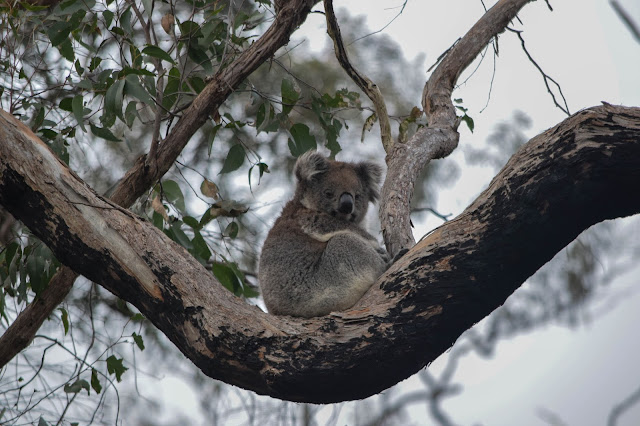It's been a while since I've been able to head out birding due to assignments that I can't put off any longer, so I thought I would share one of my favourite bird photos I've ever taken - this Pied Oystercatcher. I snapped this bird in December 2010 at the Friendly Beaches, Tasmania. I was lucky enough that it let me get quite close, and lucky for such a beautiful day at a beautiful place. And while I was looking through that folder I thought I might share some other pics from that trip.
 |
| Pied Oystercatcher, Friendly Beaches, Tasmania |
On the same trip I saw my first ever Black-faced Cormorants.
 |
| Black-faced Cormorants, Bruny Island, Tasmania |
Tasmania was a fantastic place to visit! I was there for around 2 weeks, and saw many birds, including 8 of the 12 endemic species:
- Tasmanian Native Hen
- Green Rosella
- Tasmanian Thornbill
- Scrubtit
- Tasmanian Scrubwren
- Yellow Wattlebird
- Yellow-throated Honeyeater
- Black Currawong
 |
| Black Currawong, Near Hastings Caves, Tasmania |
 |
| Green Rosella, Port Arthur, Tasmania |
 |
| Scrubtit, Near Dove Lake/Cradle Mountain, Tasmania |
 |
| Tasmanian Scrub-wren, Montezuma Falls, Tasmania |
 |
| Tasmanian Thornbill, Nelson Falls, Tasmania |
 |
| Tasmanian Native-hens, Near Cradle Mountain, Tasmania |
 |
| Yellow-throated Honeyeater, Wineglass Bay Lookout Trail, Tasmania |
 |
| Yellow Wattlebird, Wineglass Bay Lookout Trail, Tasmania |
For the first 5 days I was in Tasmania I worked on a project with Conservation Volunteers Australia on Bruny Island that involved a lot of weed removal to look after some habitat used by Forty-spotted Pardalotes - another Tasmanian endemic species that I could hear up in the canopy but didn't get to see!.After the project I returned to Hobart and spent a few days around Hobart and did a couple of day trips, one out to Port Arthur, and another down to Hastings Caves and the southern point of Tasmania. On the track to Hastings Caves we spotted a lyrebird but I wasn't quick enough to get a photo before it disappeared! I spent half a day with a guide and another couple climbing the top part of Mount Wellington which was a beautiful walk, but freezing cold at the top!
I spent another 5 days travelling around Tasmania on a backpacker tour, which was a great, affordable way to see the place if you're travelling alone, which I was. It involved sleeping in dorm bunks, and a lot of hiking which was fantastic for a young birder!
The tour started by travelling from Hobart up the east coast where we stopped at the beautiful Friendly Beaches in the Bay of Fires, where I saw my Pied Oystercatcher. We walked up a long and winding trail to a lookout over Coles Bay and Wineglass Bay.
Tasmania seems to have a lot of beautiful waterfalls, and we visited four of them - firstly the St. Columba Falls where I saw a beautiful Pink Robin, but sadly only got this blurry photo!
 |
| Pink Robin, St Columba Falls, Tasmania |
.
We visited Cataract Gorge, and saw the murals all over town at Sheffield before heading to Cradle Mountain. I hiked a lot with a group of other backpackers and admired the scenery, and at around 4 o'clock in the afternoon, we came across a group of wombats!
Our next waterfalls were the Montezuma falls, where there was a fun but slightly scary swing bridge to cross.
We visited the 30m high Henty Sand Dunes, before heading to Strauhn, where we all splurged a bit and enjoyed delicious seafood for dinner. The next day we went to Nelson Falls and Lake St Clair, and finally to Russell Falls in the Mt. Field National Park.
That trip was five and a half years ago now but I had such an amazing time and I can't wait to go back one day!








































